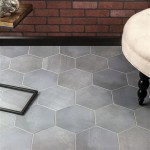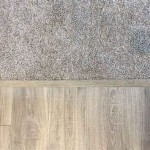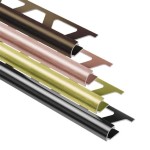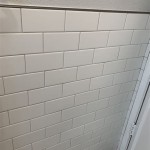Can You Put Tile On Cement Floor
Tiling over a cement floor is a common practice, offering a durable and aesthetically pleasing finish. However, proper preparation and execution are crucial for a successful, long-lasting tile installation. Several factors must be considered before embarking on this project.
Assessing the Cement Floor
Before laying tile, the cement floor needs a thorough assessment. This involves examining the surface for cracks, unevenness, and moisture issues. Any existing problems must be addressed before tiling begins to ensure a stable and level foundation.
Key Considerations for Cement Floor Assessment:
- Check for cracks: Any cracks, regardless of size, should be repaired using an appropriate concrete patching compound. This prevents the cracks from transferring to the tile surface.
- Assess for levelness: An uneven floor can lead to problems with tile adhesion and create an uneven finished surface. Self-leveling concrete can be used to correct minor imperfections.
- Test for moisture: Excessive moisture can compromise the tile adhesive and grout, leading to premature failure. A moisture meter can be used to determine the moisture content of the concrete slab. Consider a moisture barrier if necessary.
- Examine for previous coatings: Existing coatings, such as paint or sealant, may interfere with the bonding of the tile adhesive. These coatings may need to be removed or a primer specifically designed for tiling over existing coatings may be required.
Preparing the Cement Floor
Proper preparation is crucial for a successful tile installation. This involves cleaning, leveling, and potentially applying a primer to ensure the tile adhesive bonds correctly.
Key Preparation Steps:
- Thorough cleaning: The concrete surface must be free of dust, debris, grease, and any other contaminants that could interfere with adhesion. A degreaser may be necessary for oily or greasy areas.
- Leveling: If the floor is uneven, apply a self-leveling underlayment to create a smooth, level surface. Follow the manufacturer's instructions carefully for proper application.
- Priming: A primer designed for concrete surfaces can improve adhesion and prevent issues related to moisture and efflorescence (salt deposits). Follow the manufacturer’s instructions regarding primer application.
Choosing the Right Tile and Adhesive
The type of tile and adhesive used greatly influences the project's success. Selecting materials appropriate for the specific environment and intended use of the space is essential.
Tile and Adhesive Selection:
- Consider the environment: For areas exposed to moisture, such as bathrooms and kitchens, choose water-resistant tiles like porcelain or ceramic.
- Select the appropriate adhesive: Thin-set mortar is commonly used for tiling over concrete. Modified thin-set offers improved bonding and flexibility, making it suitable for larger format tiles and areas subject to movement or temperature fluctuations.
- Choose the right grout: Select a grout that is appropriate for the tile size and joint width. Consider using a sanded grout for wider joints and an unsanded grout for narrower joints.
Laying the Tile
The tile laying process requires precision and attention to detail. Properly applying the adhesive and ensuring even spacing between tiles contribute to a professional and visually appealing finish.
Tile Installation Best Practices:
- Use spacers: Tile spacers ensure consistent grout lines and prevent the tiles from touching each other.
- Trowel properly: Use the correct notched trowel recommended for the tile size to ensure adequate adhesive coverage.
- Back-butter large tiles: For larger format tiles, applying a thin layer of adhesive to the back of the tile can improve bonding.
- Clean as you go: Remove any excess adhesive from the tile surface and grout lines before it dries.
Grouting and Sealing
Grouting fills the spaces between the tiles, creating a waterproof seal and enhancing the overall appearance. Sealing the grout further protects it from staining and moisture.
Grouting and Sealing Guidelines:
- Apply grout: Apply the grout using a grout float, working it diagonally into the joints.
- Remove excess grout: Remove excess grout with a damp sponge before it dries completely.
- Seal the grout: Allow the grout to cure according to the manufacturer’s instructions before applying a grout sealer.
Maintenance and Care
Proper maintenance extends the lifespan of the tiled floor, preserving its beauty and functionality.
Maintenance Tips:
- Regular cleaning: Sweep or vacuum the floor regularly to remove dirt and debris. Mop with a pH-neutral cleaner designed for tile and grout.
- Resealing grout: Periodically reseal the grout to maintain its water resistance and prevent staining.
- Address issues promptly: Repair any chipped or cracked tiles as soon as possible to prevent further damage.
By following these guidelines, a successful and long-lasting tile installation on a cement floor can be achieved.
:max_bytes(150000):strip_icc()/can-you-install-tile-directly-on-concrete-1822600-04-458f7bb6c78348c1835cf8054ef36553.jpg?strip=all)
How To Install Tile Over Concrete
How To Tile Onto Concrete Floors Porcelain Super

How To Lay A Tile Floor On Concrete Diy Homeimprovement

How To Install Ceramic Tiles On Concrete Floor Tile Installation

How To Install Tile Over Concrete Greenbuildingadvisor

How To Lay Floor Tiles On Concrete Welcome The Rubi Tools Blog
How To Lay Floor Tiles On Concrete Stonesuper
When Cementing Tile Why Do People Add Rows To The Cement Instead Of Just Leaving It Smooth Quora

How To Prepare For Laying Tile Over A Concrete Floor

How To Tile A Concrete Floor Howtospecialist Build Step By Diy Plans Floors Flooring
Related Posts








